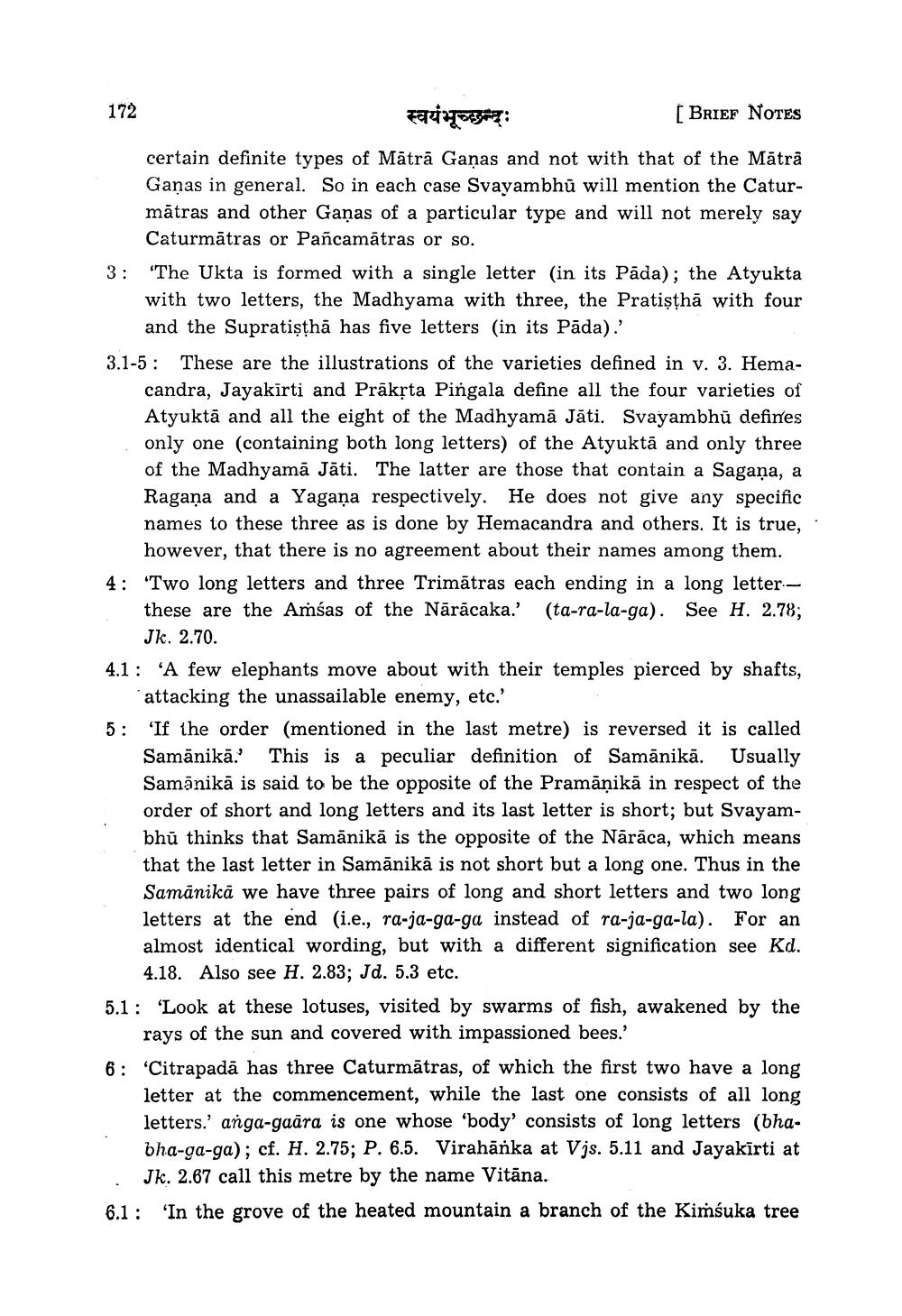________________
172
स्वयंभूच्छन्दः
BRIEF NOTES
certain definite types of Mātrā Ganas and not with that of the Mātrā Ganas in general. So in each case Svayambhū will mention the Caturmātras and other Gaņas of a particular type and will not merely say
Caturmātras or Pañcamātras or so. 3: "The Ukta is formed with a single letter (in its Pada); the Atyukta
with two letters, the Madhyama with three, the Pratişthā with four
and the Supratişthā has five letters in its Pāda).' 3.1-5: These are the illustrations of the varieties defined in v. 3. Hema
candra, Jayakīrti and Prāksta Pingala define all the four varieties of Atyuktā and all the eight of the Madhyamā Jāti. Svayambhū defines only one (containing both long letters) of the Atyuktā and only three of the Madhyamā Jāti. The latter are those that contain a Sagana, a Ragana and a Yagana respectively. He does not give any specific names to these three as is done by Hemacandra and others. It is true,
however, that there is no agreement about their names among them. 4: 'Two long letters and three Trimātras each ending in a long letter
these are the Ambas of the Nārācaka.' (ta-ra-la-ga). See H. 2.78;
Jk. 2.70. 4.1 : 'A few elephants move about with their temples pierced by shafts,
attacking the unassailable enemy, etc.' 5: 'If the order (mentioned in the last metre) is reversed it is called
Samānikā.' This is a peculiar definition of Samānikā. Usually Samānikā is said to be the opposite of the Pramāņikā in respect of the order of short and long letters and its last letter is short; but Svayambhū thinks that Samānikā is the opposite of the Nārāca, which means that the last letter in Samānikā is not short but a long one. Thus in the Samānika we have three pairs of long and short letters and two long letters at the end (i.e., ra-ja-ga-ga instead of ra-ja-ga-la). For an almost identical wording, but with a different signification see Kd.
4.18. Also see H. 2.83; Jd. 5.3 etc. 5.1: 'Look at these lotuses, visited by swarms of fish, awakened by the
rays of the sun and covered with impassioned bees.' 6: "Citrapada has three Caturmātras, of which the first two have a long
letter at the commencement, while the last one consists of all long letters.' anga-gaāra is one whose 'body' consists of long letters (bhabha-ga-ga); cf. H. 2.75; P. 6.5. Virahānka at Vjs. 5.11 and Jayakīrti at
Jk. 2.67 call this metre by the name Vitāna. 6.1: 'In the grove of the heated mountain a branch of the Kimbuka tree




